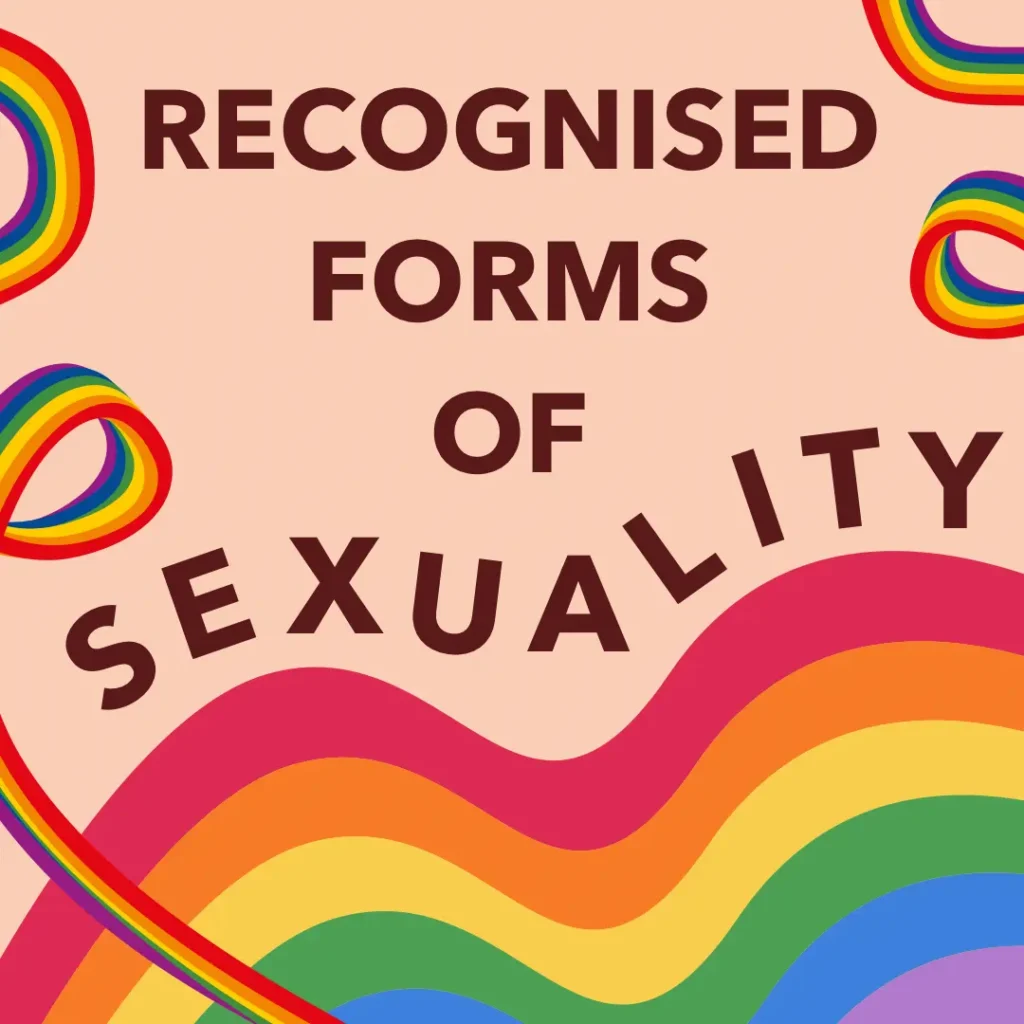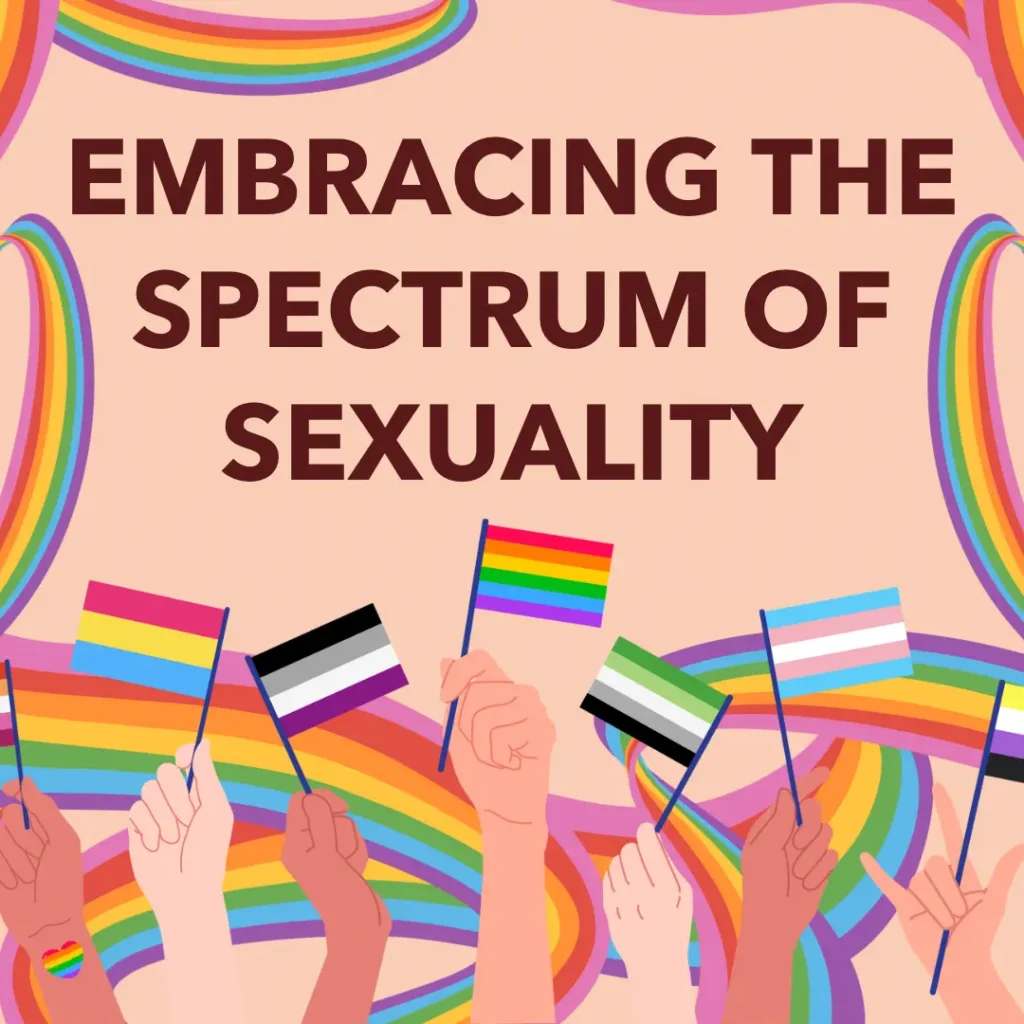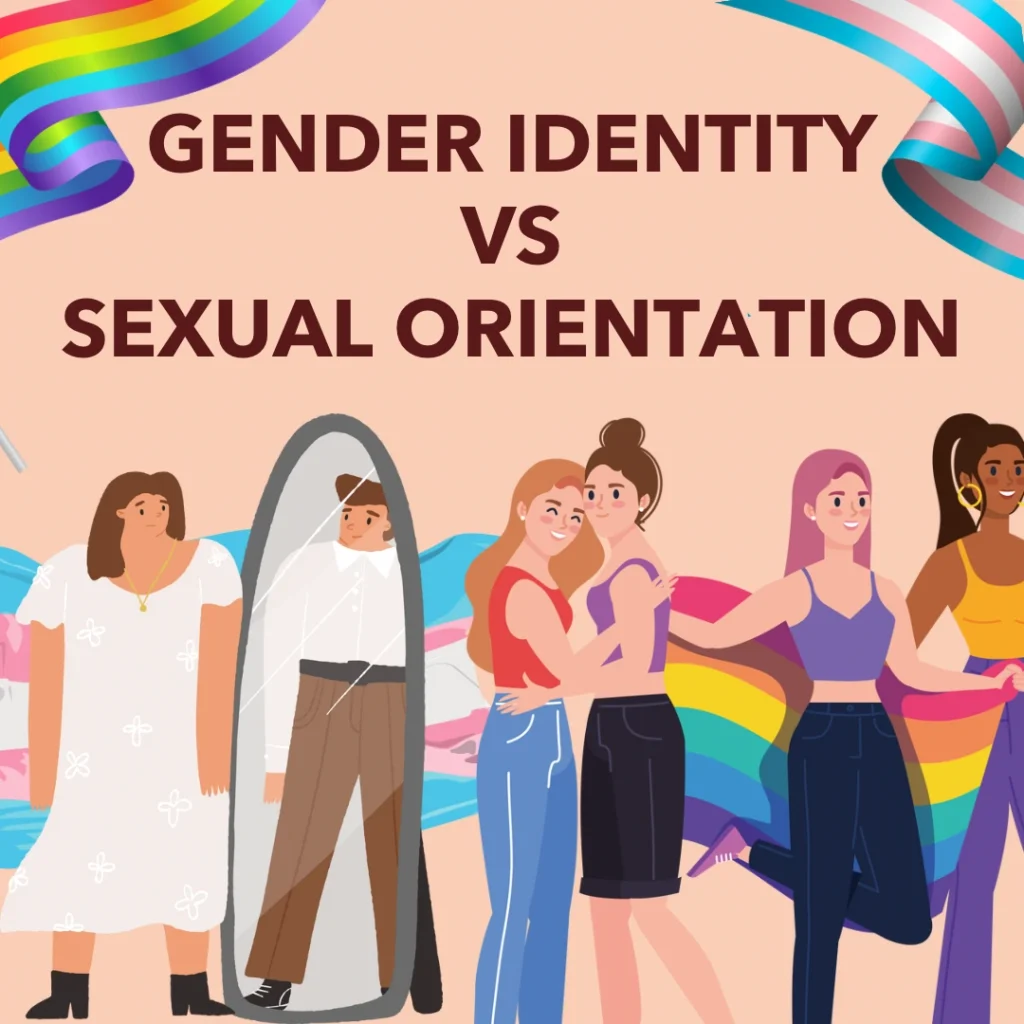In the first part of this blog series, we explored the foundational aspects of gender, uncovering its internal, social, and physical components while addressing common misconceptions and the biases individuals often face. Now, in this second part, we turn our attention to understanding sexuality and the distinctions between sexual orientation and gender identity. Both are integral yet often misunderstood elements of the human experience.
Sexuality and gender identity are fundamental aspects of our identity, shaping not only how we understand ourselves but also how we relate to the world around us. Yet, these concepts are often misunderstood or oversimplified. In this blog, we explore the expansive nature of sexuality, its different expressions, and how it intertwines with our personal identity. We’ll also distinguish between two often confused ideas—gender identity and sexual orientation—both integral to understanding human diversity. This journey through sexuality aims to educate and inform, offering a comprehensive perspective that respects the individuality of each person’s experience.
Understanding Sexuality: A Diverse and Personal Journey
Sexuality is one of the most intimate aspects of human existence, encompassing a broad range of emotions, desires, identities, and attractions. It goes far beyond physical relationships, intertwining with how we perceive our bodies, values, and how we relate to the world around us. Often misunderstood, sexuality is a complex and dynamic part of who we are.
Here we’ll explore the multi-faceted nature of sexuality—what it means, how it evolves, and the ways it defines us as individuals.
What is Sexuality?
Sexuality is often mistakenly reduced to sexual behavior, but in reality, it covers so much more. It represents the thoughts, feelings, attractions, and behaviors that shape how we experience and express ourselves sexually. It’s a broad concept, deeply personal and unique to each person, encompassing everything from our sexual desires to our emotional connections with others.
Sexuality isn’t static—it evolves with us throughout life. It’s not about who you have sex with or how often, but rather how you feel and think about relationships, attractions, and your own sexual identity.
The Dynamic Nature of Sexuality
A fundamental aspect of sexuality is that it’s constantly evolving. Over time, an individual’s understanding of their sexuality can shift as they grow and experience new relationships and attractions. This fluidity is a natural part of personal development.
Each person defines and understands their sexuality in their own way, based on their personal experiences, values, and feelings. What’s important is that everyone has the right to explore and express their sexuality freely, as long as it’s rooted in the principles of consent and respect for others.
Exploring Sexual Attraction
Sexuality includes both sexual attraction and romantic attraction—terms that are sometimes distinct and other times intertwined. Sexual attraction refers to a desire for physical intimacy with another person, while romantic attraction focuses on emotional closeness and may not always involve physical contact.
For some, both types of attraction may coexist, while others may feel only one, or even none. For example, a person may feel romantically attracted to someone without necessarily feeling a strong sexual pull, and vice versa. These variances highlight the diversity of human experiences within the spectrum of sexuality.
Recognized Forms of Sexuality

Throughout history, various forms of sexuality have been recognized, each reflecting the many ways people experience attraction and identity. Some of the most commonly acknowledged forms include:
• Heterosexuality: Attraction to people of the opposite sex or gender.
• Homosexuality: Attraction to those of the same sex or gender.
• Bisexuality: Attraction to both men and women.
• Pansexuality: Attraction that is not limited by gender identity.
• Asexuality: Limited or no sexual attraction to others.
While these terms are well-known, they are just a glimpse of the wide spectrum of sexual identities.
Exploring Other Sexualities

In addition to the more familiar categories, other less common forms of sexuality also exist, reflecting the rich diversity of human attraction:
• Autosexuality: A person who experiences attraction to themselves, often associated with self-stimulation and a lack of desire for others.
• Lithosexuality: An individual feels sexual attraction to others but does not wish for it to be reciprocated and typically does not seek out sexual relationships.
• Androsexuality: Attraction to men, males, or perceived masculinity, irrespective of biological sex.
• Demisexuality: Sexual attraction only toward individuals with whom there is a strong emotional bond.
• Gynesexuality: Attraction to women, females, or perceived femininity, regardless of biological sex.
These sexualities illustrate that human attraction is multi-dimensional and can vary widely across individuals.
The Importance of Understanding Sexuality
Recognizing and respecting the diversity of sexuality is essential for promoting a more inclusive society. Sexuality, like gender identity, is a deeply personal aspect of who we are. It is shaped by our experiences, emotions, and relationships, and it can evolve over time.
Understanding sexuality, exploring and expressing sexuality within the framework of consent and sexual rights is crucial for overall well-being. Sexuality is not something to be ashamed of or hidden—it is a core part of our humanity, deserving of acceptance and understanding.
Embracing the Spectrum of Sexuality

Sexuality is a deeply personal, ever-changing journey of self-discovery. Whether you identify with a common sexual orientation or resonate with one of the lesser-known sexualities, your identity is valid and worth celebrating. Understanding sexuality and accepting its diversity empowers individuals to live authentically and helps create a society that embraces the wide range of human experiences.
By learning about the different forms of sexuality and respecting everyone’s right to express their sexual identity, we build a world that values inclusion and empathy, where everyone’s journey is honored.
This part of the blog seeks to educate and inform readers about the broad and nuanced nature of sexuality, offering a comprehensive yet approachable take on the topic.
Gender Identity VS Sexual Orientation

As we delve into the nuanced and essential discussion of gender identity and sexual orientation, it is crucial to distinguish between these two concepts, often mistaken as interchangeable. They are as distinct as apples and oranges—each unique, yet both integral to the fabric of individual identity.
Gender identity refers to a person’s intrinsic understanding of themselves as a gendered being. It transcends physical and societal labels, capturing the essence of who someone truly is—unfiltered, unprejudiced, and deeply personal. Gender identity is an internal experience, rooted in the mind, where an individual’s perception of their gender may align with or diverge from societal expectations.
On the other hand, sexual orientation is a matter of the heart. It describes a pattern of emotional, romantic, or sexual attraction to another person based on that person’s gender and is composed of feelings, behaviors, and identities. Whether the attraction is to the same gender, a different gender, multiple genders, or none at all, sexual orientation encompasses these complex aspects. Simply put, if an apple identifies as an orange, that is gender identity. Whether the apple is attracted to apples, oranges, both, or none is sexual orientation.
Understanding that gender identity and sexual orientation are separate but interconnected aspects of a person is vital. For instance, identifying as transgender pertains to gender identity, not sexual orientation. Transgender individuals can identify with any sexual orientation, just as cisgender people do—be it lesbian, gay, straight, bisexual, asexual, or queer. Recognizing the distinction between gender identity and sexual orientation is crucial in fostering a more inclusive and empathetic society. Understanding these aspects allows us better to support each individual’s journey of self-discovery and expression. Embracing this knowledge not only empowers individuals to live authentically but also strengthens the collective fabric of humanity, where diversity in identity and love is celebrated.
Why Does This Distinction Matter?
Understanding the differences between gender identity and sexual orientation is essential for fostering inclusivity and supporting individuals in their journeys of self-discovery. Each person’s experience is unique, and respecting these nuances allows for deeper empathy and more meaningful relationships. Gender identity, sexual orientation, and sexuality are all important parts of who we are as human beings, shaping how we understand ourselves and interact with others.
By embracing and respecting these aspects, we contribute to a more compassionate and diverse society where everyone is free to live authentically.
Understanding the diversity and complexity of sexuality, gender identity, and sexual orientation is key to creating a society that values empathy and embraces differences. Each person’s experience is unique, evolving over time as they grow in self-awareness and expression. By respecting these personal journeys, we can build a world that cherishes authenticity, empathy, and the freedom to love and identify as one chooses. In celebrating these differences, we strengthen the fabric of our collective humanity, where everyone’s identity is honored and embraced. This blog aimed to shed light on the distinctions between these concepts and foster an inclusive environment.
Stay tuned for the upcoming blog, where we will delve into critical topics such as the types of harassment cases and why some go undocumented, legal and policy support, the role of allies, and cisgender privileges. These discussions will further explore how we, as a society, can better support diverse gender identities and ensure fairness for all.
